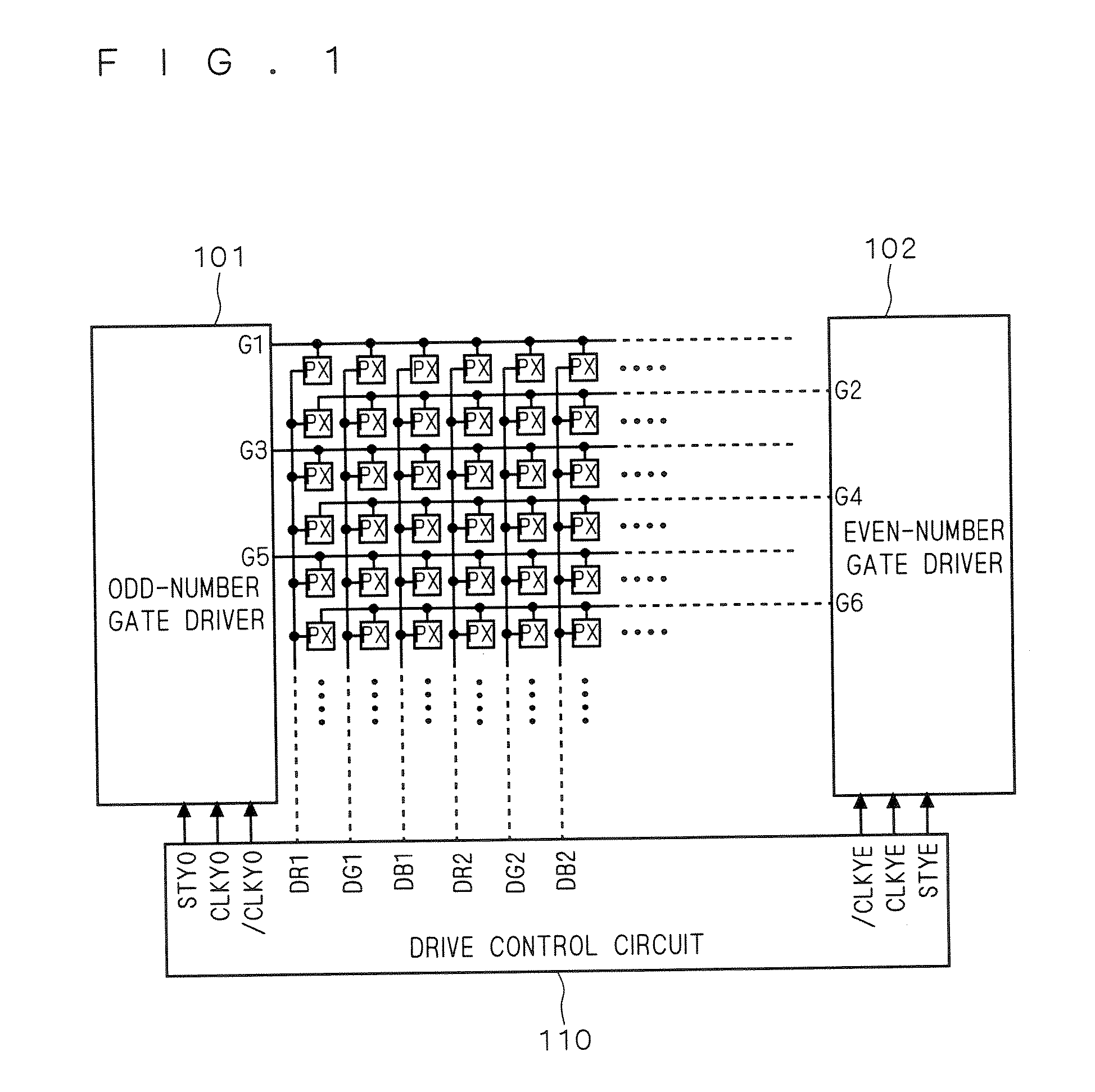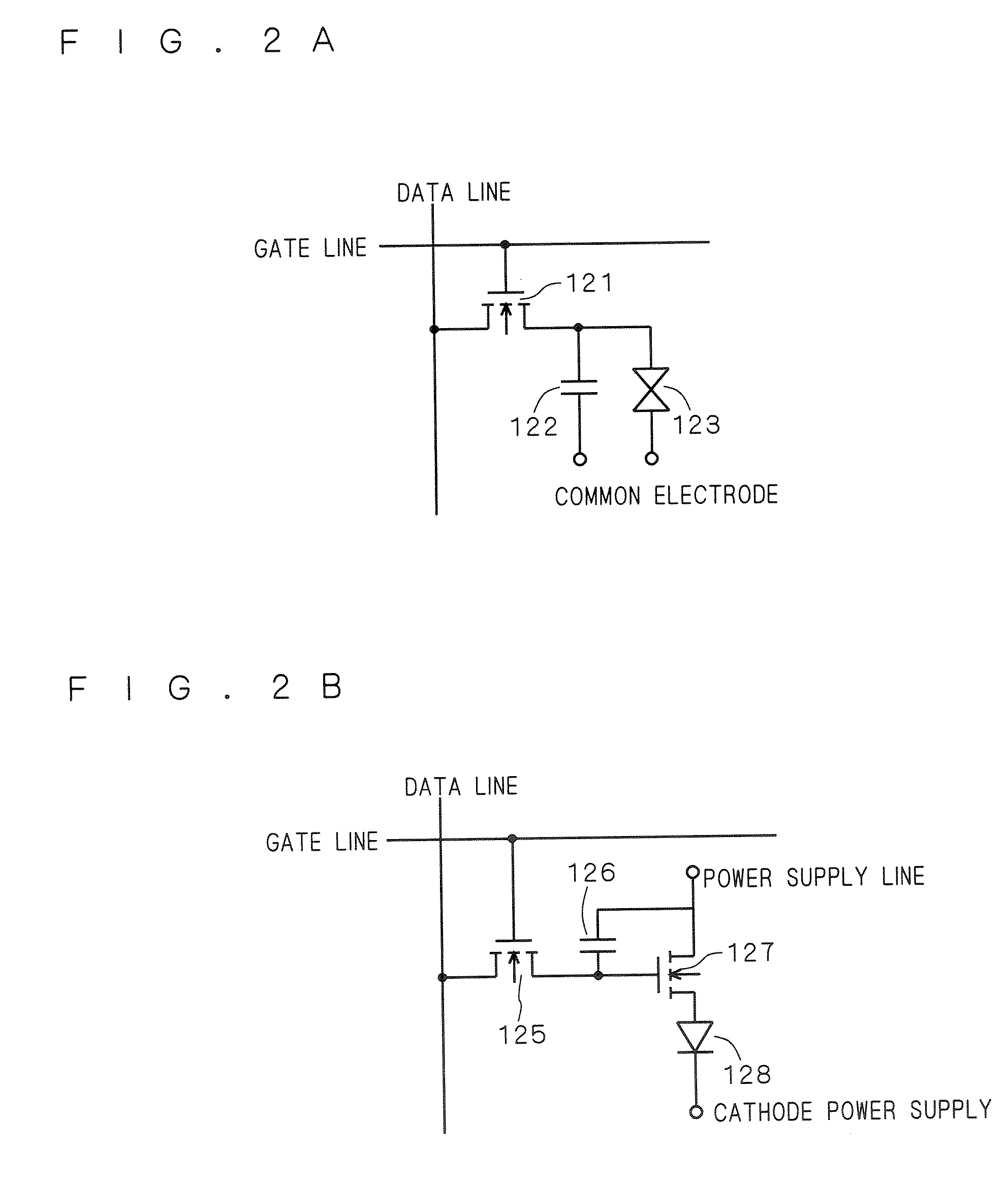Display device
a display device and display circuit technology, applied in the field of display devices, can solve the problems of increasing the manufacturing cost of the drive control circuit, increasing the manufacturing cost of the display device, and similar problems in the a-si tft but also in the organic tft, so as to prevent the variation of the threshold voltage of the tft
- Summary
- Abstract
- Description
- Claims
- Application Information
AI Technical Summary
Benefits of technology
Problems solved by technology
Method used
Image
Examples
first preferred embodiment
[0038] Specific preferred embodiments of the present invention will be described as follows. However, as a preliminary, a conventional general-purpose drive control circuit and a conventional general-purpose gate driver will be described for the sake of easier understanding of the present invention. FIG. 1 is a block diagram illustrating an example of a structure of a conventional display device.
[0039] In the display device illustrated in FIG. 1, pixels PX formed using a-Si TFTs which are formed on an insulating substrate such as a glass substrate are arranged in a matrix. As an example of the pixels PX, a pixel formed using a liquid crystal element and a pixel formed using an electroluminescent element such as an organic electroluminescent (EL) element are cited, for example.
[0040]FIG. 2A illustrates an example of a structure of a liquid crystal pixel formed using a-Si TFTs. A gate line is connected with a gate of an active element 121 (a-Si TFT) and a data line is connected with...
second preferred embodiment
[0125] In a second preferred embodiment, an example of a circuit configuration for the frequency division circuit 20, which is different from the circuit configuration illustrated in FIG. 7, will be described. FIG. 12 illustrates a circuit configuration of a frequency division circuit 20a according to the second preferred embodiment.
[0126] The frequency division circuit 20a is different from the frequency division circuit 20 in FIG. 7 in that a transistor Q26 is provided between the input terminal for the start signal STYE and the node N5. More specifically, the frequency division circuit 20a includes a latch / inverter 23a including the transistors Q10, Q11, Q12, Q13, and Q26, in place of the latch / inverter 23 in FIG. 7, between the node N1 and the node N5.
[0127]FIG. 13 is a timing chart showing operations of the frequency division circuit 20a. More specifically, operations performed while the frequency division signals VFR and / VFR are transitioning from H level and L level to L l...
third preferred embodiment
[0129] Also in a third preferred embodiment, an example of a circuit configuration for the frequency division circuit 20, which is different from the circuit configuration illustrated in FIG. 7, will be described. FIG. 14 illustrates a circuit configuration of a frequency division circuit 20b according to the third preferred embodiment. The frequency division circuit 20b in FIG. 14 includes a buffer 29 in place of the transistor Q1 in FIG. 7, and further includes a buffer 22a in place of the buffer 22 and the transistor Q9 in FIG. 7. The circuit configuration of the frequency division circuit 20b is identical to that in FIG. 7 in all the other respects.
[0130] The buffer 29 includes a buffer circuit including transistors Q18a and Q19a, a transistor Q1a connected between the buffer circuit and the input terminal for the start signal STYO, and a transistor Q1b connected between the buffer circuit and the low level power supply. A gate of the transistor Q18a is connected with the gate ...
PUM
 Login to View More
Login to View More Abstract
Description
Claims
Application Information
 Login to View More
Login to View More - R&D
- Intellectual Property
- Life Sciences
- Materials
- Tech Scout
- Unparalleled Data Quality
- Higher Quality Content
- 60% Fewer Hallucinations
Browse by: Latest US Patents, China's latest patents, Technical Efficacy Thesaurus, Application Domain, Technology Topic, Popular Technical Reports.
© 2025 PatSnap. All rights reserved.Legal|Privacy policy|Modern Slavery Act Transparency Statement|Sitemap|About US| Contact US: help@patsnap.com



